Content
Large bunches of white grapes always look luxurious - either on the vine or as a gourmet dessert. The perfect shape of the berries, like that of the Nadezhda Aksayskaya table grape variety, attracts even more attention. Among the advantages of an early-ripening hybrid are its unpretentiousness and the possibility of growing it in the middle climate zone.
Characteristic
Universal Nadezhda grapes Aksayskaya was bred by a famous amateur breeder from the Aksay district of the Rostov region, V. U. Kapelyushny. The hybrid was obtained by crossing common Arcadia varieties and Talisman. Observations of the new variety were carried out for 10 years, and then enthusiastic gardeners began to grow the new vine in different parts of the country, even in the Urals and Siberia. The frost resistance of the hybrid is -24 degrees. Winegrowers are happy to propagate table varieties that do not require special care, like Nadezhda Aksayskaya. Beginner gardeners can grow grapes. The bushes are productive, the harvest reaches up to 40 kg of sweet berries from one vine.
Depending on the region where the vineyard is located, the berries ripen in 110-120 days. The clusters hold the berries tightly and can be left on the vine for a longer period. The pleasant taste of the berries becomes sweeter and acquires nutmeg notes.Many gardeners believe that the berries taste like the Arcadia variety. The Nadezhda Aksayskaya grape vine ripens by more than two-thirds during the growing season. In addition to table purposes, the berries are used to create an exquisite bouquet of wine. The juice has a noticeable nutmeg aroma.
Features of the vine
This undemanding grape variety is grown on any soil: clayey, sandy, black soil. The cuttings root well. One-year-old seedlings are distinguished by a developed root system and active growth. A powerful vine requires rationing of shoots and inflorescences: no more than 35 eyes are left per bush. No peas are observed. The Nadezhda Aksayskaya vine has average resistance to common grape diseases, estimated at 3 points. It is necessary to carry out timely preventive treatments against fungal diseases. Also, Nadezhda Aksayskaya grapes have average resistance to wasps and phylloxera.
Description
According to the characteristics of the Nadezhda Aksayskaya grape, the vines of the variety are medium-sized or vigorous on old rootstocks. Ripened shoots are strong, light brown in color, with brighter colored nodes. Round, dark green, medium-sized grape leaves, slightly dissected. The productivity of the variety is determined by the presence of bisexual flowers. The light green stalks are long but strong.
Dense, large bunches of Nadezhda Aksayskaya grapes are cylindrical-conical, sometimes winged. On average, one bunch weighs from 700 to 1500 g, under good conditions the weight reaches 2 kg. Oval oblong berries, measuring 2.8 x 2.3 cm, weigh 8-12 g or more, have a pleasant greenish-yellow hue.The skin is quite dense, but not noticeable when consumed. The pulp of the grape variety is juicy, dense, and has a pleasant crunch. The soft, sweet taste when fully ripe is enriched with notes of honey and nutmeg. The sugar composition of the berries of the variety rises to 16-18%, acidity – 6-7 g/l.
Advantages and disadvantages
The rapid spread and growing popularity of Nadezhda Aksayskaya grapes indicate the advantages of the variety for growing in personal plots.
- Early ripeness;
- Rich taste of berries and attractive appearance of the bunch;
- High commercial performance of grape bunches;
- Keeping quality and transportability;
- High and stable yield of the variety;
- Relative resistance to gray rot, oidium and mildew (level 3 points);
- Drought and frost resistance.
Among the disadvantages of the Nadezhda Aksayskaya grape variety are:
- Sensitivity to phylloxera;
- Susceptibility to wasps;
- Prone to fungal diseases during prolonged rainy periods.
Reproduction
The variety is propagated by cuttings, layering, and grafting. The Nadezhda Aksayskaya vine actively develops if it is grafted onto a long-planted grape bush.
By layering
This method is used more often with bushes growing on their own roots. An excellent method of propagating grapes in regions with a short period of summer heat. It is ineffective for industrial areas, but is suitable for home vineyards. If the length of the vine allows, the cuttings are dropped into a permanent place, and the excess shoots formed are either planted or removed.For good rooting and development of a grape bush, you can create only two layers from one vine. Layers are created in autumn, early spring or early July. The grape shoot takes root without being separated from the mother plant bush: roots grow from nodes and internodes, and sprouts from buds.
- If work begins in early spring, on a vine with buds that have not yet appeared, under an overwintered branch, dig a groove 45 cm wide and 20-25 cm deep;
- A 5-centimeter layer of earth mixed with humus and complex mineral fertilizers is placed at the bottom, or superphosphate and potassium salt are added;
- The grape branch is bent, placed in a furrow, secured with garden pins and sprinkled with soil to a height of 10 cm. The top is raised above the ground;
- The furrow is watered and covered with polyethylene until rooting;
- Carry out regular watering so that the soil does not dry out, remove weeds;
- With the appearance of sprouts, the film is removed, the groove is filled with earth to the surface level, and as the shoots grow, they are tied up;
- When grape bushes are sprayed for prevention, the sprouts are also treated;
- In the fall, carefully dig out a groove with sprouts, cut off each shoot with roots and keep it in a dark and dry basement until spring. Planted in June.
Cuttings
For rooting, take well-ripened annual autumn cuttings of the Nadezhda Aksayskaya variety, at least 0.8-10 cm thick, with several eyes: 8 buds for planting directly into the soil and 5-6 for seedlings. Sliced cuttings for propagation, some gardeners make small cuts or scrapes on the bottom of the cutting with a knife before planting.Fragments of the vine are kept in water for two days, then wrapped in wet cloth and taken to the basement. During storage, cuttings should not be allowed to dry out.
In spring, cuttings are planted in pots with sand and soil and moistened regularly. The cuttings are deepened into the soil by two-thirds of the length so that the two upper buds remain above the ground. Established cuttings are planted in established warm weather.
Cuttings are prepared not only in the fall, they are also cut in the spring. Spring plantings take root better. The grape bushes are developing intensively, the shoots are ripening.
How to plant a southern vine correctly
Grape plantings - cuttings or seedlings - are placed on the south or south-west side of buildings, in a quiet place, not blown by winds. The distance from the wall is 0.8-1 m. For the vine of the Nadezhda Aksayskaya grape variety, supports or trellises must be arranged. When planting, you can simultaneously install a strong support rod in the hole.
- Dig a hole measuring 0.8 x 0.8 m and the same depth;
- Drainage material is placed at the bottom;
- The top soil is mixed with humus and fertilizers: 500 g of azofoska, 1-liter jar of wood ash;
- The distance between adjacent holes is not less than 1.5-2 m;
- Water the hole generously and mulch.
Care
The Nadezhda Aksaya grape vine is developing rapidly. The root system of plants of this variety is also well branched. Because of this, the grapes do not need frequent watering, as well as ill-conceived nitrogen fertilizing in July or August. Only in very dry periods are the grapes watered. When pruning, make sure that the bush is not overloaded: 30-35 eyes are enough. Cut to 2-4 eyes.In the last ten days of June, the shoots are thinned out and excess inflorescences are removed. The ovaries are spread on both sides of the bush. For the winter, the vine is removed from the trellis and covered with hay or straw.
Top dressing
In the spring, Nadezhda Aksayskaya grapes are fertilized with compost, and humus is given in the fall. Such feeding is carried out once every three years. Now you can purchase balanced complex mineral fertilizers that support grapes:
- In spring, during the awakening of the vine;
- Before flowering;
- In the berry filling phase.
- Grapes need phosphorus fertilizing if the leaves fade a little and darken;
- The vine lacks potassium if the berries are unsweetened and the leaves turn yellow early.
Diseases and pests
To prevent vine diseases, the Nadezhda Aksaya grape variety is sprayed, especially on rainy days:
- “Topaz”, “Quadris”, “Strobi”, “Karatan”, “Rubigan”, “Bayleton” help in the fight against powdery mildew;
- Effective in the fight against gray rot: Bordeaux mixture, Ridomil-Gold, Rovral.
- If phylloxera is affected, remove the vines;
- The insecticide "Omite" will help fight spider mites;
- The grape bunches are protected from wasps with a fine-mesh plastic net.
Every amateur can have a productive, unpretentious vine. A minimum of care and attention will give you sweet berries for dessert in the pre-autumn time.
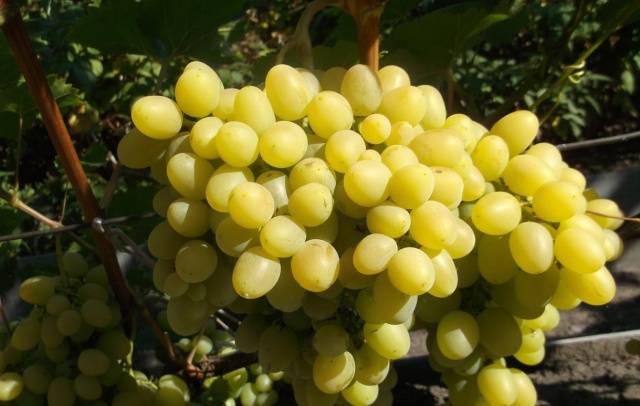
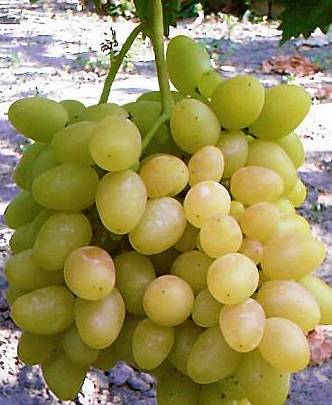
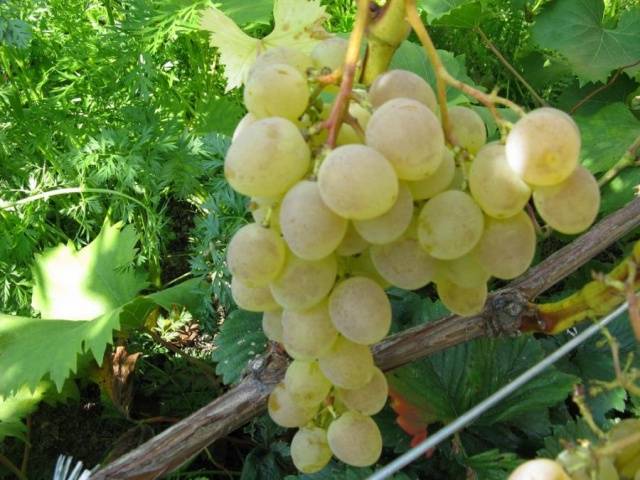

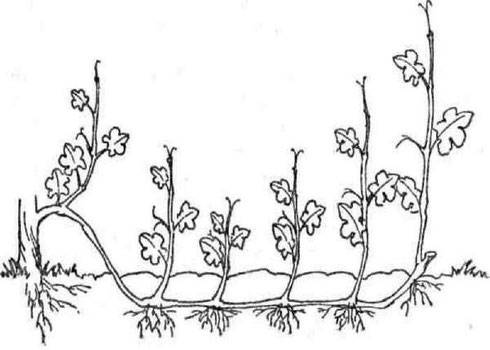
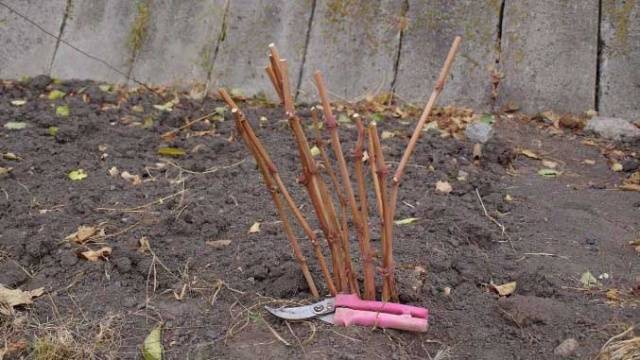
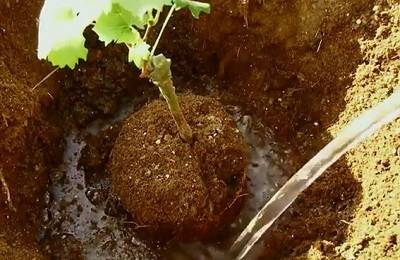
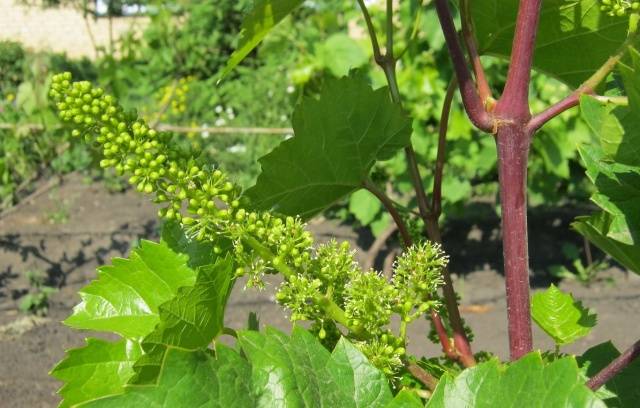
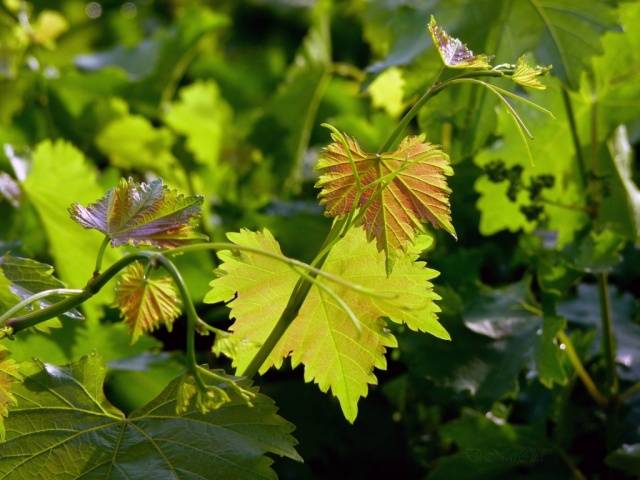
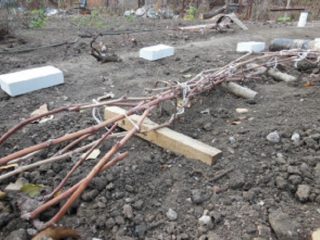
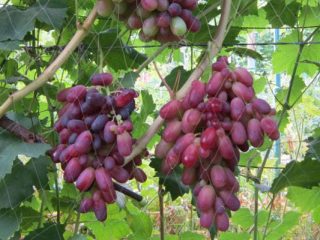
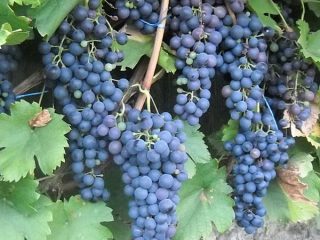
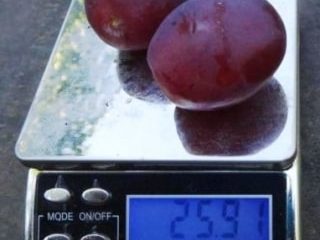
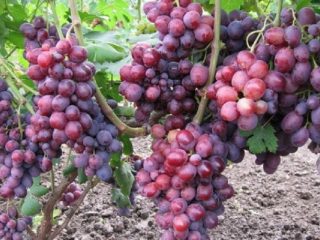
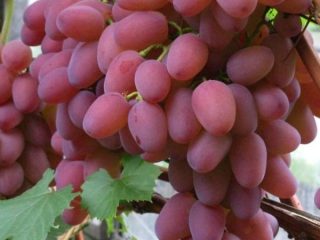
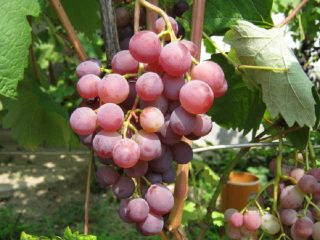

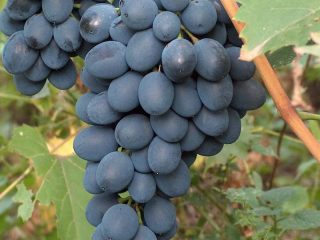
Thank you!